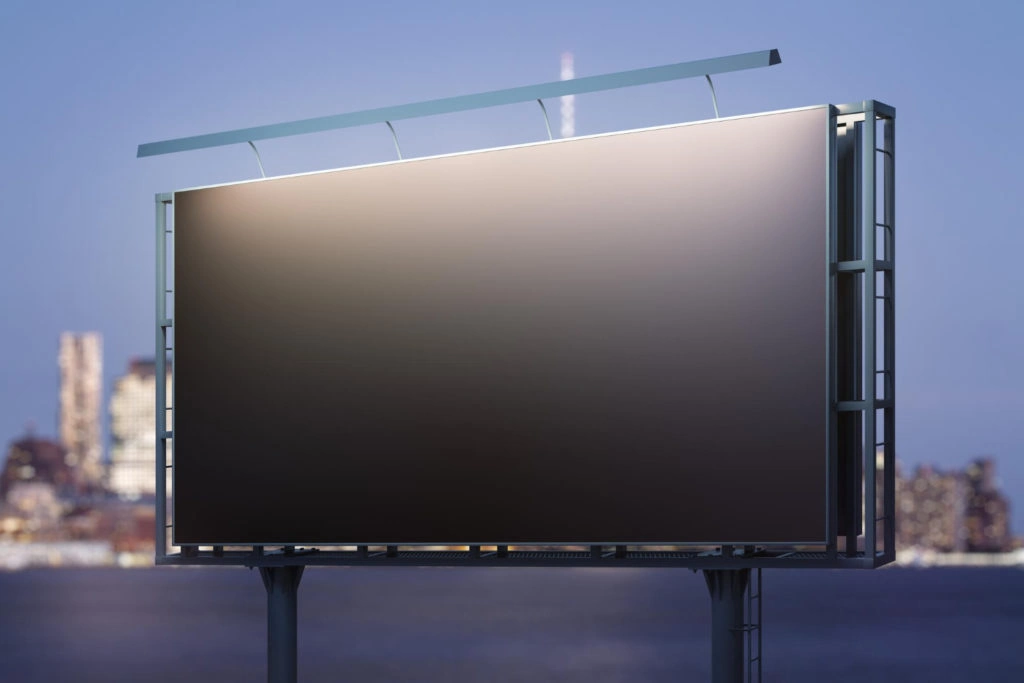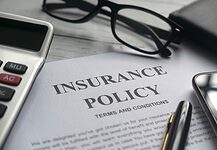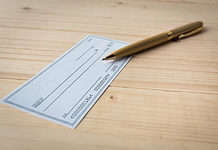Are you pondering over the idea of adding billboard advertising to your marketing mix? You’re not alone. Like you, we’ve often asked ourselves “how much do billboards cost?”
From contemplating the implications of renting it and what factors can affect the price, there’s a lot to take into account.
Renting a billboard for about four weeks will cost an average of $850. Quite the financial commitment if you ask us. However, their unbeatable visibility and impressive reach often make them worth every penny.
In this blog post, we will dive deep and explore all that impacts billboard pricing, from location-specific costs to design expenses and the various types of billboards.
If you stay with us, we’ll light up your way through outdoor advertising and help you decide if billboard marketing is for us! Let’s take this journey together!
Factors That Affect How Much do Billboards Cost
Location, duration, design and size, format (physical or digital), circulation and audience demographics, and seasonal demand are the key factors that affect the cost of billboard advertising.
Here’s how each of them impacts the cost.

Location
The placement of your billboard holds a significant role in determining its effectiveness. A strategically located billboard grabs more attention, increasing the chances for successful advertising.
For example, billboards placed along busy highways or crowded city centers will likely reach a larger audience than those tucked away on less traveled roads. As such, these prime locations often come with higher costs due to their high-value visibility and potential impact on advertisement success.
Keep in mind that prices can vary greatly from one city to another; densely populated cities usually command higher rates than smaller towns due to the sheer volume of traffic they handle daily.
A crucial principle in outdoor advertising is understanding that not all locations deliver equal results. Consider nearby landmarks, local population demographics, and typical traffic patterns when choosing a location for your billboard ad.
This way you’re investing wisely by ensuring maximum visibility for your campaign while balancing cost-effectively within an effective advertisement strategy framework.
Duration
We can’t ignore the significant role duration plays in billboard advertising costs. The time you want your ad to run directly affects the overall price. For instance, digital billboards usually hold a spot for seven seconds, costing between $10 and over $15,000 depending on the duration.
Digital destinations like Times Square usually entertain obligations from around two weeks. Be mindful that rent prices vary daily based on several factors inclusive of rental period and location.
Interestingly enough, digital billboards tend to be pricier than their traditional counterparts due to flexibility in time limit and immediate message changes they offer advertisers.
Design and Size
Billboard size directly impacts the cost of advertising. Larger billboards generally have a higher price tag because they tend to make more impressions, effectively boosting their impact on viewers.
The design aspect also plays a critical role in determining costs. More intricate or visually alluring designs might carry a heftier fee due to the additional creative and design work required.
Whether opting for bold colors, appealing shapes, or eye-catching images, designing your billboard may escalate costs but can also enhance its effectiveness significantly.
Format
Physical and digital formats are the two options for billboard advertising. Do they cost the same? Naturally not. Digital billboards tend to be more expensive than physical ones.
The cost of a digital billboard can range from $1,200 to $15,000 per month, depending on factors such as location and demand.
Physical billboards are typically made of vinyl material and can vary in cost from $210 to $2,100 per week. So when you’re making the decision about your marketing strategy and advertising effectiveness, it’s essential to consider the billboard format that works best for your company and your budget.
Circulation and Audience Demographics
Circulation and audience demographics are all about knowing which people you are targeting. Advertisers must consider who they want their message to reach and where these individuals are located.
By understanding the demographic data, such as age, gender, ethnicity, and average earnings, advertisers can better target the right audience for their billboard campaigns. Factors like traffic volume in a particular geographic area and market segmentation are crucial in determining ad effectiveness.
These factors contribute to overall circulation and impressions, which are important to calculate the cost per thousand impressions or CPM. The higher the CPM, the harder it becomes to reach a broader audience, while a lower CPM can increase your ad’s reach and exposure. Thus, balancing is essential.
Seasonal Demand
The final aspect that influences how much do billboards cost is the season or month of the year. Factors like holidays, events, and peak seasons can significantly impact billboard demand.
During popular times such as summer or Christmas, there tends to be increased demand for billboard space. As a result, advertisers may experience higher costs during these periods due to limited availability and increased competition.
It is important to consider seasonal fluctuations when determining advertising costs and plan accordingly to ensure effective campaign delivery within budget constraints.
Different Types of Billboards
There are three main types of billboards: classic (physical), digital, and mobile.
Classic (physical)
Classic (physical) billboards are the traditional, non-digital structures we often see along highways and busy streets.
Classic billboards can vary in size and design, but they have a strong presence and can significantly impact consumers. They are typically made of paper or vinyl, and although dimensions may vary, they can reach up to 60 feet wide.
Digital
Digital billboards are a more advanced and high-tech version of traditional billboards. They use electronic displays, such as LED screens or multimedia panels, to showcase dynamic advertisements.
With their ability to show multiple ads simultaneously and feature animations, digital billboards offer greater effectiveness in capturing the attention of passersby. Additionally, these billboards provide more flexibility in ad content and can target specific audiences based on demographics and location.
However, due to their advanced features and capabilities, digital billboards tend to be more expensive than traditional ones. The size and type of the digital billboard also play a role in determining its cost.
Mobile
Mobile billboards are a unique and effective way to reach your target audience. These billboards, also known as advertisements on wheels, offer businesses the flexibility to showcase their message in specific areas and to targeted demographics.
Setting up mobile billboards is generally more affordable than other forms of advertising, making it an attractive option for businesses with limited budgets. The average cost of a mobile billboard is around 0.77¢ per 1,000 views.
Not only can mobile billboards be cost-effective, but they can also leave a lasting impression on potential customers. Their ability to move around different locations makes them memorable and increases engagement compared to other types of advertising.
Average Billboard Costs in the U. S.
With so many billboards in the country, it’s hard to come up with an accurate cost. With that said, we will try to provide an estimate of the average cost for a four-week billboard campaign based on ad format, circulation rates, and location.
Read on to learn more about the different types of billboards and their associated costs.

Average Cost for a Four-Week Campaign
The average cost for a four-week billboard campaign in the U.S. is around $850. However, this price can vary depending on location, size, and demand. In smaller to midsize cities, you can expect to pay between $2,100 and $2,500 for a four-week campaign.
Remember that some billboards may charge as little as $10 per day. To calculate the total cost of your campaign, consider the number of impressions and the CPM rate.
Prices for digital billboards can range from $1,200 to $15,000 per month.
So when considering billboard advertising, take into account that it varies significantly depending on the factors we have previously mentioned. This are just averages we hope help you make a decision.
Additional Expenses to Consider
Some additional expenses need to be considered when considering the cost of billboard advertising. These expenses can include the production costs for designing and creating the advertisement.
Additionally, installation fees may be associated with putting up the billboard and ongoing maintenance charges to keep it in good condition. Depending on the specific location or if you want a premium spot, extra fees may be involved.
Investigating these additional expenses is important when budgeting for a billboard campaign.
In addition to these costs, one should consider any design fees that may be required if you need assistance creating an eye-catching and effective ad. Furthermore, some billboards allow advertisers to pay per impression or click, which can affect the overall cost depending on your advertising goals.
Pros and Cons of Billboard Ads
Billboard ads offer high visibility and exposure to a wide audience. However, they can be expensive and may not provide targeted demographic reach or allow for frequent message changes.
Benefits of Billboard Advertising
Billboard advertising offers numerous benefits for businesses looking to promote their products or services. Firstly, it is a cost-effective marketing strategy that provides high visibility to many potential customers.
With billboards strategically placed in locations where they are likely to be seen by a large audience, businesses can reach a mass market and increase brand recognition. The visual impact of billboard ads creates strong visual references for prospects, leading to increased sales and revenue growth.
Billboard advertising is an effective promotional tool that boosts brand awareness and enables businesses to connect with their target audience effortlessly.
Drawbacks and Considerations
While billboard advertising can effectively reach a wide audience, there are some drawbacks and considerations to keep in mind.
Firstly, the cost of billboard advertising can be quite high, especially for smaller companies with limited budgets.
Additionally, it’s important to consider the strategic usage of billboards. While they have the potential to attract attention, their impact can play for good or bad depending on the campaign. If the marketing campaign doesn’t go as planned, the billboard will likely won’t be forgotten soon.
How to Choose and Rent a Billboard Location
When choosing and renting a billboard location, several factors must be considered. First, think about your target audience and the potential reach of the billboard. Be mindful about the demographics of the people who will see it and whether they align with your target market.
Choosing a location with high circulation rates is also important, meaning many people pass by or view the billboard regularly.
Another factor to consider is the size and format of the billboard. Different sizes and formats may have different costs associated with them. Think about what will best showcase your advertisement while still fitting within your budget.
Additionally, prime locations may have higher prices compared to less desirable areas. If you’re looking for maximum exposure, you may need to invest more in securing a prime spot, such as Times Square.
To gather specific information on prices and available locations, reach out to companies like Lamar specializing in billboard advertising. They can provide you with valuable insights and help guide your decision-making process.
Choosing and renting a billboard location requires careful consideration of your target audience, circulation rates, size options, format choices, potential reach, and pricing information from industry experts like Lamar.
By taking these factors into account before making any decisions ensures that you get an effective advertising campaign that reaches the right people at an affordable cost.






















